Indian Art – Discover the History and Influence of Ancient Indian Art
From ancient Indian artworks to thriving modern art from India, the country’s vivid visual tradition is the product of a diverse range of cultural influences. The bright, diverse, and captivating designs that depict many different civilizations demonstrate the range of Indian art styles from this region. Because several of the world’s main religions, including Hinduism, Islam, and Buddhism, originated or blossomed in India, most traditional Indian art is political or religious in nature. Indian artwork covered in this article includes Indian paintings and Indian sculptures.
Table of Contents
Traditional Indian History
Indian art has a great sense of design that can be seen in both modern and ancient Indian art. These ancient Indian artworks can be traced back to ancient communities around the third millennium BC. Traditional Indian art includes various creative forms such as sculptures, ceramics, textile arts, and paintings by Indian artists.
Traditional Indian Art History
Archaeologists uncovered prehistoric rock artworks which can be traced back at least 290,000 years in this location. The Bhimbetka petroglyphs in central India are the earliest specimens. This was the dominant kind of cave painting from the Paleolithic to Neolithic eras, frequently showing human and animal figures.
The Indus Valley Civilization produced the first known Indian sculptures between 2,500 and 1,800 BC. They made miniature terracotta and bronze figurines of animals and humans such as cattle and primates.
The development of Buddhism in the sixth century BC cleared the door for religious artwork, generally in the shape of bronze and stone statues. During this period, religious painters also experimented with constructing massive stone temples adorned with Greek-style columns. Traditional Indian Sculpture was popular among Hindus and Buddhists. Hinduism remained a major emphasis of Indian art for generations, with statues of deities such as Shiva being popular.
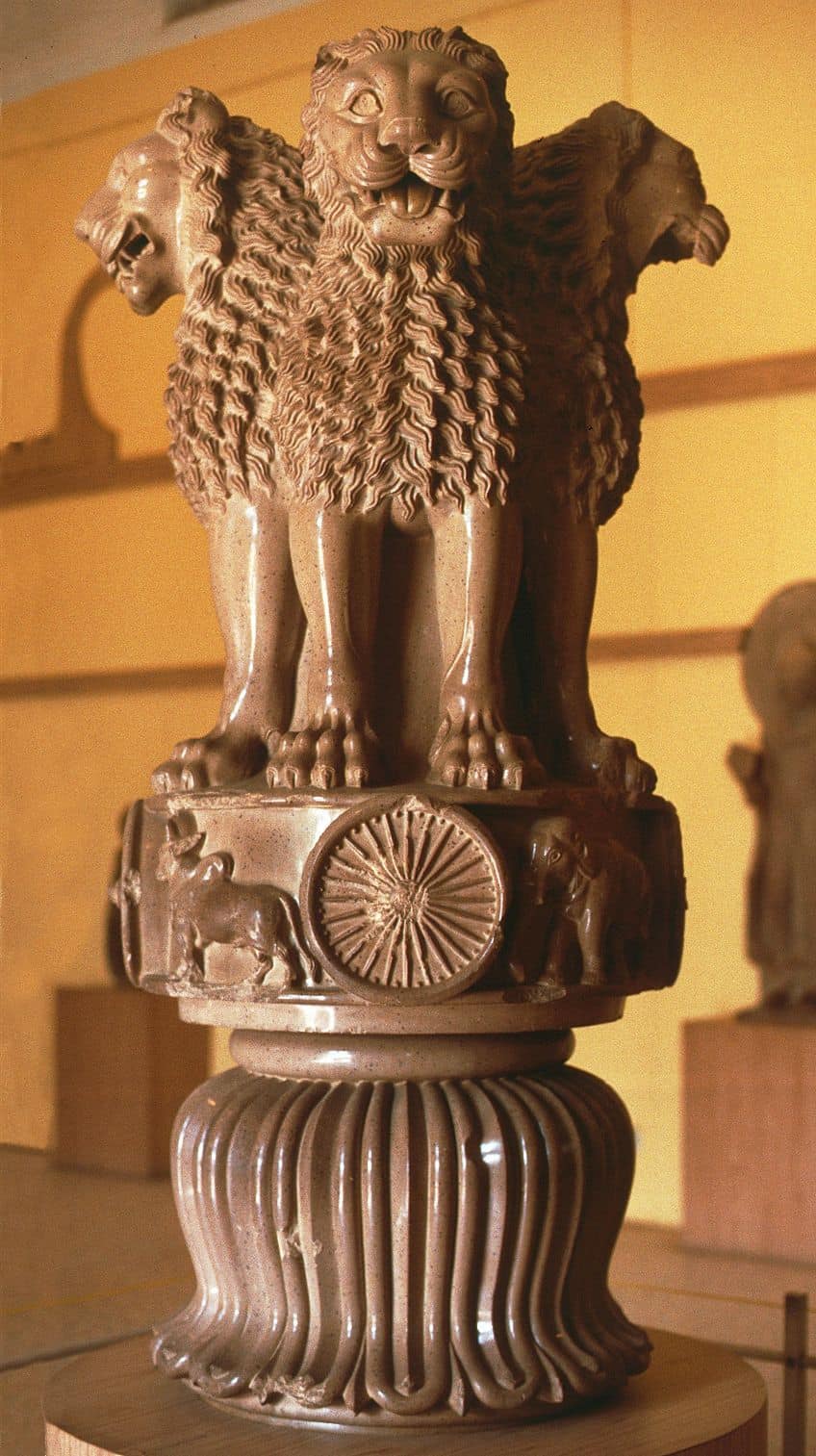
By the 16th century, Islam had grown in prominence under the Mughal Empire, and Indian artwork creation had increased under Islamic monarchs. The arts flourished during this period, and the building of the Taj Mahal began in 1631. British engagement in India started in the 18th century when art schools were founded to promote European forms.
As a result, indigenous art styles mixed with external cultures, and ancient art forms were sometimes glorified or exaggerated in order to attract European customers.
India won sovereignty from the British empire in 1947, prompting indigenous painters to seek a new style. Traditional components and inspirations from the country’s rich past are incorporated into modern Indian artwork.
Traditional Indian Art Styles
Each area of India had its particular art style. Religious motifs are among the most popular, with legendary animal and human figures as well as rich decoration. Sculpture and paintings by Indian artists have been the most prominent art forms throughout India’s history, as well as their magnificent architecture.
Indian Paintings
Each painting style that arose in India symbolized traditions, practices, and ideas that had been passed down from past generations. Though early Indian paintings were created on walls, the art form was later adapted to more contemporary materials such as paper, fabric, canvas, and other materials.
A few of the most prominent Indian folk-art styles are listed here.
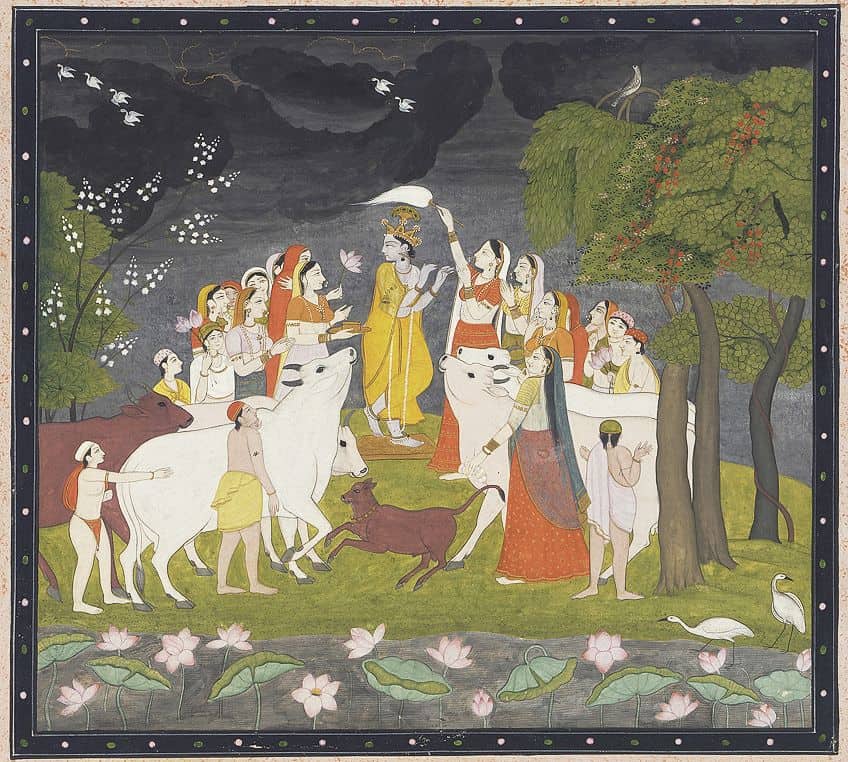
Madhubani Paintings
Madhubani paintings are among the most well-known in India. This style started as a kind of wall painting in the Mithila area of Bihar, but it wasn’t generally recognized in the Western world until British government servant and art historian W.G. Archer discovered it in 1934 while surveying damage from an earthquake on the border between Nepal and India.
The Madhubani style is distinguished by a straightforward and vivid depiction of tradition and culture, generally representing mythical subjects.

In this style, artists combine colorful images with simple patterns, which frequently feature flower, animal, or bird designs. The art form is practiced in a variety of genres such as Katchni, Bharni, Tantric, and Godna.
Miniature Paintings
First found on palm leaves, created for merchants who transported them throughout the country in the 10th and 12th centuries, these little works were mainly crafted as images for manuscripts. Throughout the Mughal and Rajput courts, the art form grew in importance.
Miniature paintings were elaborate and detailed, relying on Persian methods. The themes varied from historical and religious situations to ordinary ones.

Pattachitra Paintings
This style, which goes back to the 12th century BC in Orissa, is another early type of painting. This kind of painting is still produced in the area’s tiny settlements today. Pattachitra literally means “cloth picture,” which accurately describes this classic, cloth-based kind of scroll painting.
The paintings, known for their detailed intricacies and legendary themes, use angular, aggressive lines and are heavily influenced by Mughal-era influences.

Warli Paintings
Warli folk paintings, a kind of traditional Indian artwork, have been around for 2,500 years. The style developed in Maharashtra, a state in western-Central India, and is still commonly performed today. Warli paintings, which are often painted on the walls of huts, use linear and monochrome colors and a basic manner of execution that mimics cave painting.
In contrast to other styles of tribal art, which use a plethora of colors, this style uses earth tones and neutral shades to show the everyday routines of indigenous people like hunting, farming, and dancing.

Though Pattachitra, Warli, Madhubani, and miniature paintings are some of the most well-known forms, numerous additional varieties of Indian folk art come from various times and places of the subcontinent, including:
- Thanjavur paintings: Between the 16th and 18th centuries, this South Indian painting style thrived. These paintings are brightly colored panel artworks created on a wooden plank, with a god as the predominant subject matter.
- Kalamkari paintings: These paintings are block-printed cotton cloth made in the Indian regions of Telangana and Andhra Pradesh. It has a strong relationship to Persian themes and was originally employed for crafting narrative scrolls and panels.
- Gond paintings: This style of art glorifies nature, representing anything from lush foliage to animals. The artworks are made up of finely organized dots and dashes.
Indian Sculpture
Indian sculpture is still a popular form of creative expression, particularly as a kind of religious art. Buildings were lavishly decorated, and the subject matter was mostly abstracted human shapes meant to express Buddhist, Hindu, and Jain concepts. In Indian sculpture, female goddesses such as Kali, Shakti, and Brahma were frequently represented.
Indian sculptures date back to the Indus Valley when terracotta figures were among the earliest to be manufactured.
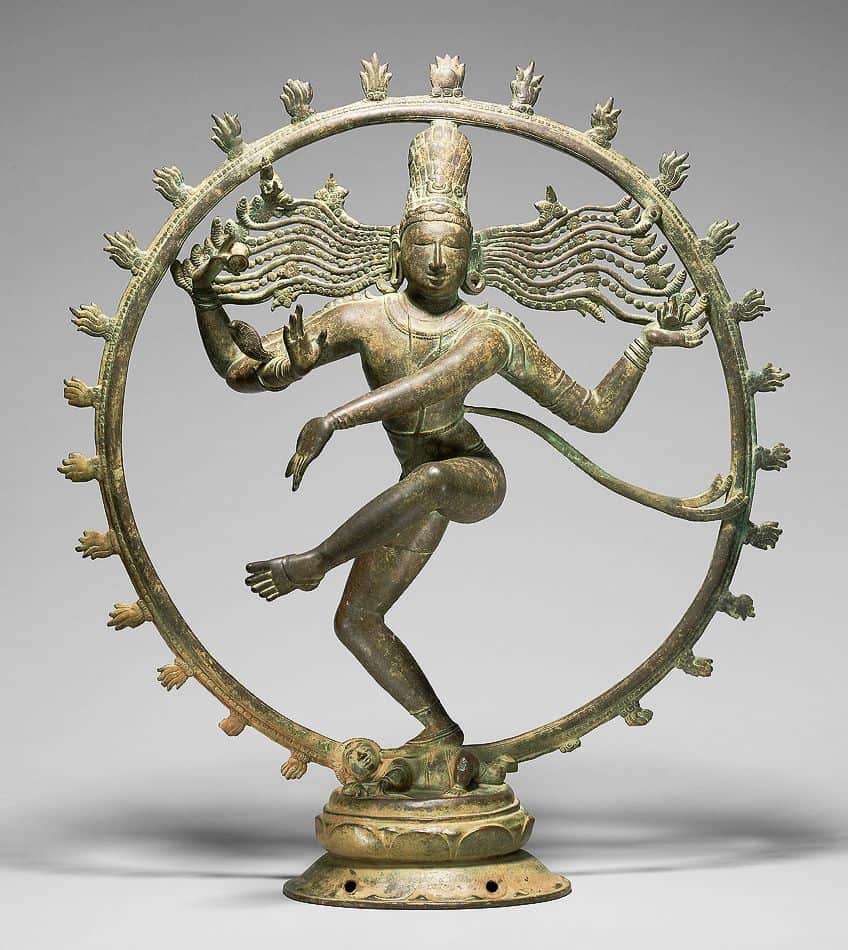
Large stone pillars emerged at crossroads and key places during the Mauryan Dynasty, which lasted from the 4th to the 2nd centuries BC. They frequently had lotus-shaped tops and lion motifs, which were imperial insignia. During this time, several massive stone images of deities were created, followed by smaller copies that were put on Buddhist monuments. Stupas were encircled by ornately carved gates adorned with a variety of religious emblems.
In the second and first centuries BC, more developed Indian figurative sculptures started to appear. Over the decades that followed, a diverse range of styles and customs developed in various places.

The Elephanta Caves, a series of cave temples mostly devoted to the Hindu deity Shiva and built during the mid-5th and 6th century AD, is one of the most notable buildings. By the 9th and 10th centuries, Indian sculpture had evolved into a form that differed little from what it is now and was mostly utilized as building adornment.
In the early years of the 20th century, Indian sculpture followed western academic art practices, and styles were significantly influenced by realism artists working on secular subjects in British art colleges. The old and customary forms displaying tales and deities were significantly altered. Ramkinkar Bai, worked in the 1940s and 1950s to combine Western art with traditional Indian art, exploring unusual materials such as gravel, concrete, and cement.
This innovation continues in modern Indian sculpture, which draws on traditional methods and subject matter while experimenting with new approaches.
Important Indian Artists and Their Famous Works
Now that we have taken a look at the history of art from India, as well as the various Indian art styles, we can move on to look at some of the most well-known sculptures and paintings by Indian artists. We will start with an introduction to each artist and then explore their Indian paintings and other artworks.
Raja Ravi Varma (1848 – 1906)
| Nationality | Indian |
| Date of Birth | 29 April 1848 |
| Date of Death | 2 October 1906 |
| Place of Birth | Kilimanoor, Travancore |
Ravi Varma, who was born in the Kerala town of Kilimanoor in 1848, was of royal descent. According to legend, his uncle discovered him sketching images on the walls of his residence. The uncle took him to the royal palace in Thiruvananthapuram, where he was taught in painting.
He was exposed to numerous Western and Indian styles of the time at the palace. Oil as a medium was only being introduced, and there were few who were familiar with the technique.
Ravi Varma learned the medium by seeing Theodor Janson, a Dutch artist who was visiting the palace. He rose to fame as Raja Ravi Varma, revered as the founder of contemporary Indian painting for two main reasons. He was the first to combine European academic methodologies with Indian tastes. Ravi Varma emphasized realism in his paintings, focusing on details, the play of light and shadows, and giving depth by employing perspective. The folds of a saree fluttered, the hair curled, and the eyes glowed with need.
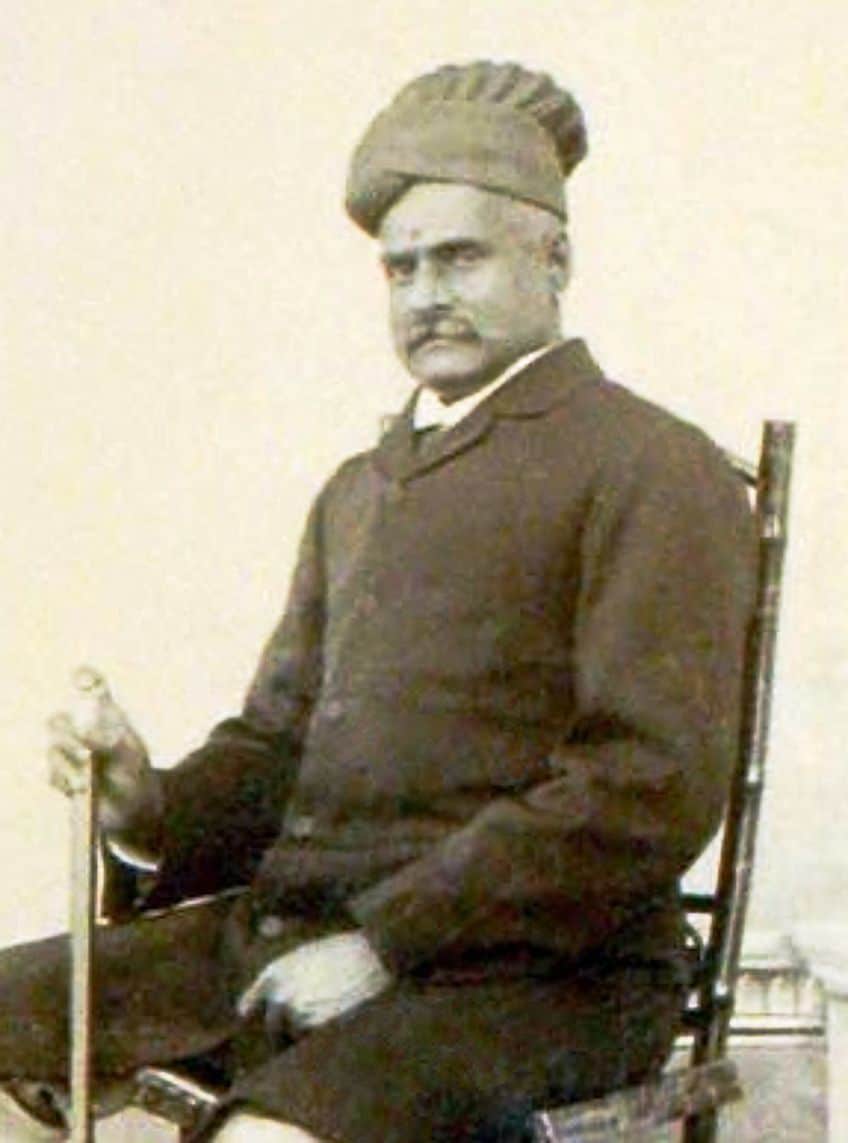
The gems that lavishly ornamented his figures glistened in a perceived slant of light with heavier strokes. His paintings are brimming with life, with trees laden with fruits and flowers, waterways glistening with their various colors, and individuals seemingly ready to blink their eyes and resume their activity. This was a significant departure from the sort of artwork that was created at the time.
Ravi Varma’s extensive collection of work reflects his journeys across the country’s ever-changing geography. Few people traveled at that age, but his search was aided by the country’s railways, which were being built at the time.
His brother Raja Raja Varma, a superb artist in his own right, was often by his side, assisting Ravi Varma in his painting and managing his enterprises. Ravi Varma was cognizant of his customers – the princes and dewans he painted – an ambitious blend that made him among the most sought-after painters, according to Rupika Chawla. Raja Ravi Varma, widely regarded as the creator of Indian calendar painting, brilliantly brought Hindu legendary characters to life.

Until then, most of the painted figures were flat, and the gods were only recognizable by their personal accouterments. His painting output was crucial in the formation of national consciousness. It was also during a period in Indian history when national sensitivities were developing. His Veda-reflective work caught on quickly, earning popularity while also nourishing the conscience. This might be one of the reasons why his equally accomplished brother, landscape artist Raja Raja Varma, did not receive the same acclaim as his brother.
For decades following his death, his works adorned the walls of middle-class houses; nevertheless, new schools of painting eventually emerged. The Bengal School of Art responded angrily to Raja Ravi Varma’s European academic artistic approach.
Along the same lines, a few art historians criticized his works for much the same factors that made him famous in the first place – combining Western academic approaches with Indian topics.
Shakuntala (1898)
| Date Completed | 1898 |
| Dimensions | 110 cm x 181 cm |
| Medium | Oil on Canvas |
| Current Location | Sree Chitra Art Gallery |
Ravi Varma portrays Shakuntala, a prominent figure in the Mahabharata, claiming to pick a thorn from her heel while actually searching for her lover, Dushyantha, as her companions mock her. This mere motion – the bend and turn of the head and torso – invites the viewer into the story, encouraging them to place this moment inside an imagined series of pictures and occurrences.
The picture stands alone as a frozen scene (like a frame from a film), taken from an ongoing series of incidents.

These works also highlight the importance of the “male gaze” in establishing the feminine image. Despite being missing from the frame, the male lover serves as a vital reference point; his glance transfixes Shakuntala, as well as Damayanti, into “desired” pictures, presenting them as poetic and sensuous ideals.
Abanindranath Tagore (1871 – 1951)
| Nationality | Indian |
| Date of Birth | 7 August 1871 |
| Date of Death | 5 December 1951 |
| Place of Birth | Jorasanko, Calcutta |
Abanindranath Tagore was born in the Bengal town of Jorasanko and was exposed to art from a young age. He was one of the most important artists, our nation was blessed with, as the Tagore family has a history of culture and literature. As a proponent of Swadeshi principles, he founded the Bengal School of Art. His history is sufficient to inform you about his extraordinary work, which paved the way for the creation of contemporary Indian art.
The picture stands alone as a frozen scene (like a frame from a film), taken from an ongoing series of incidents.

This concept, however, did not emerge overnight. He grew conscious of the English domination over the art scene in India when he enrolled in the Calcutta School of Art in 1890. He was profoundly disturbed by it since he was a big believer in ancient Indian ways. As a real artist, he founded the ‘Indian Society of Oriental Art’ with his brother Gaganendranath Tagore. He combined Indian style into his paintings, resulting in a fundamental transformation in the teachings. He didn’t even hesitate to condemn Western “materialistic” art.
Truly a versatile individual, several of his works reflected India and earned widespread acclaim. When his work was finally acknowledged and marketed as a national Indian style inside British art organizations under the moniker Indian Society of Oriental Art, he made history.
Nevertheless, one of his most notable works was the Arabian Nights series, which he completed in 1930. He employed the Arabian Nights tales as a metaphor in these works to depict colonial Calcutta’s emerging cosmopolitanism.
Bharat Mata (1905)
| Date Completed | 1905 |
| Dimensions | 26 cm x 15 cm |
| Medium | Watercolor painting |
| Current Location | Victoria Memorial Hall, Kolkata, India |
The painting was created during the Swadeshi movement. The movement emerged as a reaction to Lord Curzon’s Partition of Bengal (1905), which divided Bengal’s mostly Muslim eastern portions from its largely Hindu western areas. Indian nationalists involved in the Swadeshi movement responded by rejecting British products and organizations, organizing rallies and parades, creating committees, and exerting political pressure.
The center person in the artwork carries a book, sheaves of rice, a strip of white fabric, and a wreath, all of which are connected with Indian tradition and the economics of India in the early 20th century.
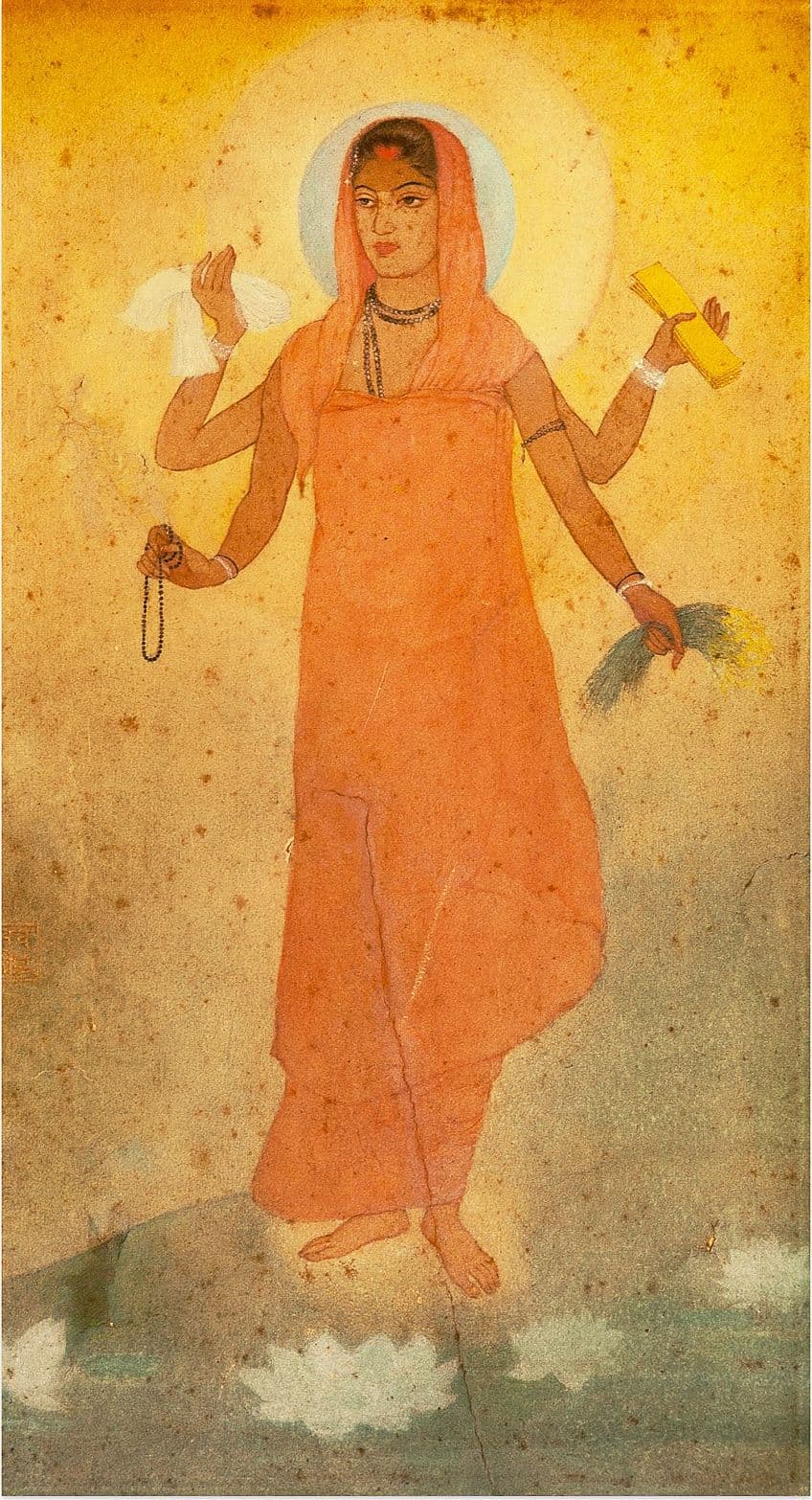
Furthermore, the primary figure in the artwork has four hands, evoking Hindu iconography that associates many hands with enormous strength. The picture is historically significant since it is one of the first depictions of Mother India. Many variations of the Bharat Mata have been created in paintings and other kinds of art since 1905.
The value of Tagore’s original artwork, nevertheless, is still acknowledged. From start to finish, the image is a plea to the Indian heart in the Indian language. It is the first outstanding work in a new style.
If it were possible, it would be mass-produced in the thousands and spread across the region until there wasn’t a farmer’s hut or a craftsman’s cottage between Cape Comorin and Kedar Nath that didn’t have this Bharat-Mata exposition on one of its walls. As one examines its attributes, one is struck time and again by the clarity and subtlety of the represented personality.
Amrita Sher-Gil (1913 – 1941)
| Nationality | Indian-Hungarian |
| Date of Birth | 30 January 1913 |
| Date of Death | 5 December 1941 |
| Place of Birth | Budapest, Hungary |
Amrita Sher-Gil, a contemporary Indian art trailblazer, utilized her paintbrush to reflect the daily life of Indian women in the 1930s, frequently expressing a sense of loneliness and desolation. She painted individuals while traveling to the marketplace, at home, and a wedding. She occasionally portrayed women connecting with other women.
The pieces appeared to convey a feeling of calm resolution at moments. It was a unique representation of women from India in an era when images tended to portray them as cheerful and docile.
For example, the melancholy picture Three Girls depicts ladies with passive looks, their gloomy brown features contrasting with the brilliant reds, greens, and amber of their clothes. The tone is dismal as if they are waiting on someone or something they suspect will never arrive. Sher-Gil became recognized as the “Indian Frida Kahlo” because of her style and attention to women. Her subjects’ loneliness was easily understood because their feelings mirrored her own. She lived between worlds as a result of her upbringing, frequently yearning for a feeling of belonging.
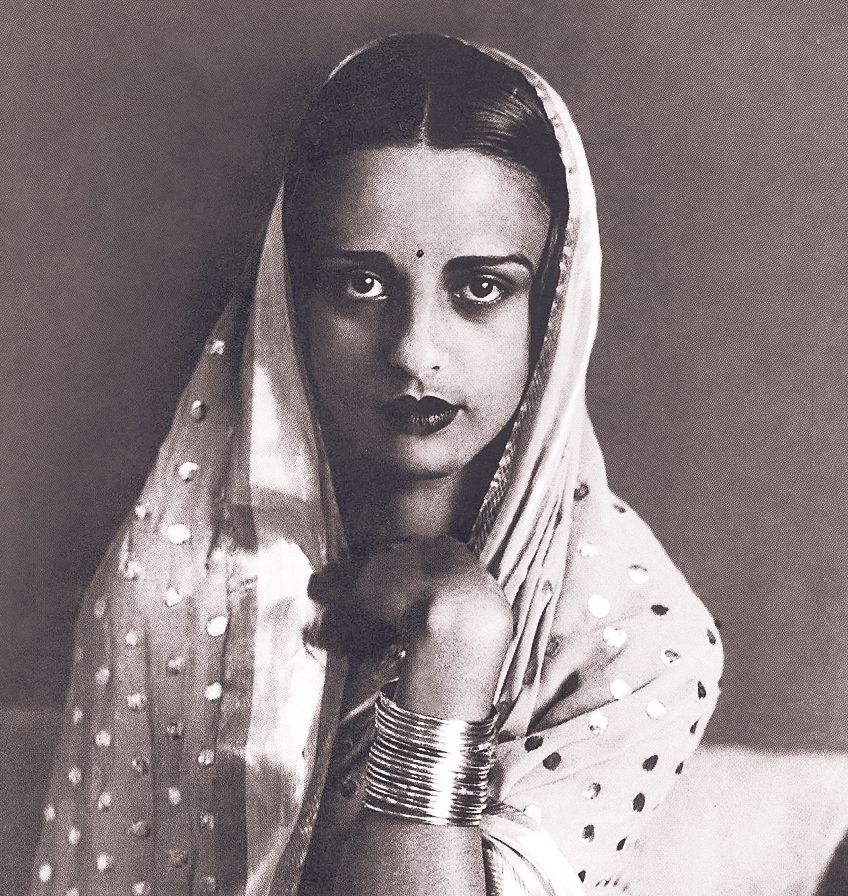
Sher-Gil was similarly torn about her sexuality. “Partly as a result of her greater perspective of a woman as a powerful individual, emancipated from the artifice of tradition,” Dalmia said, she was captivated by the concept of a lesbian affair. She had a close relationship with the painter Marie Louise Chassany, and several art experts, including her nephew, thought her painting Two Women portrayed their desire for one another.
Sher-Gil traveled extensively during her life, visiting Turkey, France, and India, drawing substantially from pre-colonial Indian art forms and modern Indian culture. She is considered a notable 20th-century Indian artist, with a legacy comparable to the Bengal Renaissance innovators.
She was also a talented musician and an avid reader. Despite the fact that she was poorly recognized when she was living, her works are among the most expensive among Indian women artists currently.
Self Portrait (1931)
| Date Completed | 1931 |
| Dimensions | 65 cm x 54 cm |
| Medium | Oil on canvas |
| Current Location | Christie’s |
This is the creator’s first artwork to be placed at auction in London, and one of just eight paintings by Sher-Gil to be auctioned internationally. The artist’s paintings are designated as ‘National Art Gems’ by the Indian government, and are regarded as of such national value to Indian heritage that they are not sellable if sourced in India, and must stay in the country if purchased in India. As a result, major Sher-Gil artworks are rarely offered for sale outside of India.
This 1931 artwork is one of her unseen and unexhibited works.
It has stayed in France since its creation and will make its first transatlantic travel this summer, first shown in New York, where it is set to be displayed at Christie’s, and then to London for its sale previewing and bidding. Sher-Gil was temporarily engaged to Yusuf Ali Khan in 1931, and rumors circulated that she was also committing adultery with her cousin Victor Egan. In 1931, Sher-Gil painted pictures of these two men, each staring inwards into the distance, maybe pondering their own life in the hands of this seductress.

Sher-Gil’s picture was also completed the same year. These paintings construct a triangle between three people, placing them in dialogue — each averting the viewer’s gaze, keeping a secret that only the three appear to be aware of. Among her 19 previously reported self-portraits, this is the only one known in profile. The artist is in full profile here, avoiding direct engagement with the observer. The composition, on the other hand, cuts diagonally across the canvas, with the body practically springing out of the canvas onto the observer.
The empty golden bowl between her and the spectator depicts the emotional vacuum she may have experienced as an 18-year-old divided between her different loves.
Amrita is reported to have had a life as intriguing and unconventional as her work. Her narrative is intriguing — her father, a photographer, documented her early years for posterity — and provided insights into both Amrita and Indian and European high society in the 1920s.
That wraps up our look at artists and art from India. The vestiges of Indian art that can be traced back to the third millennium BC have been found. Every age has its own character, customs, history, and revolutions that define it. India’s art forms, too, have developed over the centuries. Paintings, architecture, and sculpture first appeared in ancient India.
Frequently Asked Questions
What Are the Various Indian Art Styles?
Every region of India had its own distinct art style. Religious themes, with mythical animal and human characters and ornate embellishment, are among the most popular. Sculpture and paintings by Indian painters, as well as their exquisite architecture, have been the most renowned art forms throughout India’s history.
What Are Madhubani Indian Paintings?
Madhubani paintings are some of India’s most well-known. This style began as a type of wall painting in the Mithila region of Bihar, but it wasn’t widely recognized until W.G. Archer found it in 1934 while evaluating the damage caused by an earthquake on the Nepal-India border. The Madhubani style is characterized by a direct and vivid portrayal of tradition and culture, which typically depicts legendary topics.
Isabella studied at the University of Cape Town in South Africa and graduated with a Bachelor of Arts majoring in English Literature & Language and Psychology. Throughout her undergraduate years, she took Art History as an additional subject and absolutely loved it. Building on from her art history knowledge that began in high school, art has always been a particular area of fascination for her. From learning about artworks previously unknown to her, or sharpening her existing understanding of specific works, the ability to continue learning within this interesting sphere excites her greatly.
Her focal points of interest in art history encompass profiling specific artists and art movements, as it is these areas where she is able to really dig deep into the rich narrative of the art world. Additionally, she particularly enjoys exploring the different artistic styles of the 20th century, as well as the important impact that female artists have had on the development of art history.
Learn more about Isabella Meyer and the Art in Context Team.
Cite this Article
Isabella, Meyer, “Indian Art – Discover the History and Influence of Ancient Indian Art.” Art in Context. June 19, 2022. URL: https://artincontext.org/indian-art/
Meyer, I. (2022, 19 June). Indian Art – Discover the History and Influence of Ancient Indian Art. Art in Context. https://artincontext.org/indian-art/
Meyer, Isabella. “Indian Art – Discover the History and Influence of Ancient Indian Art.” Art in Context, June 19, 2022. https://artincontext.org/indian-art/.


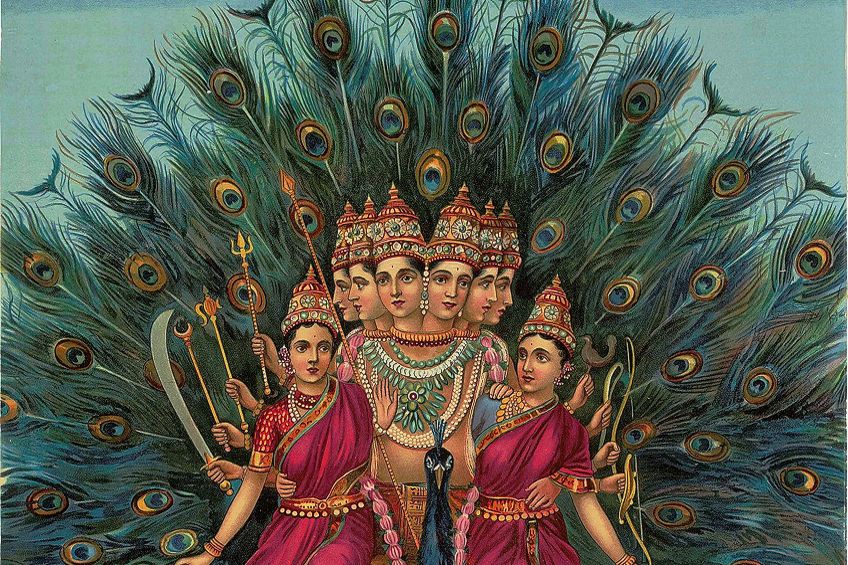


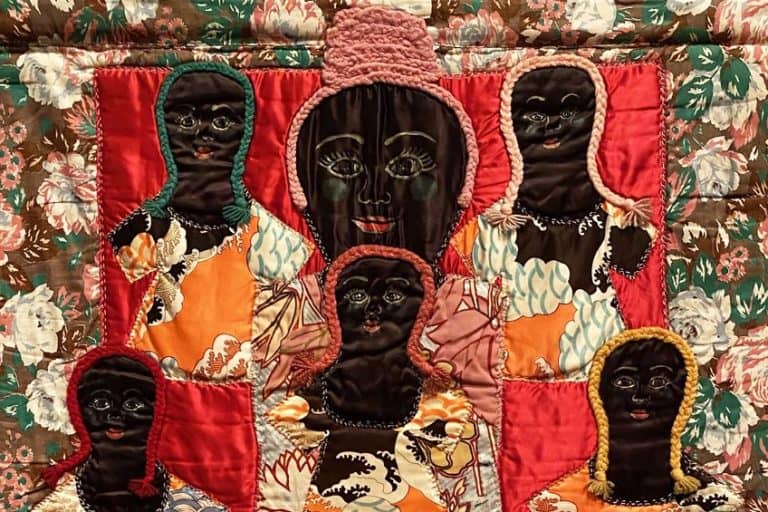


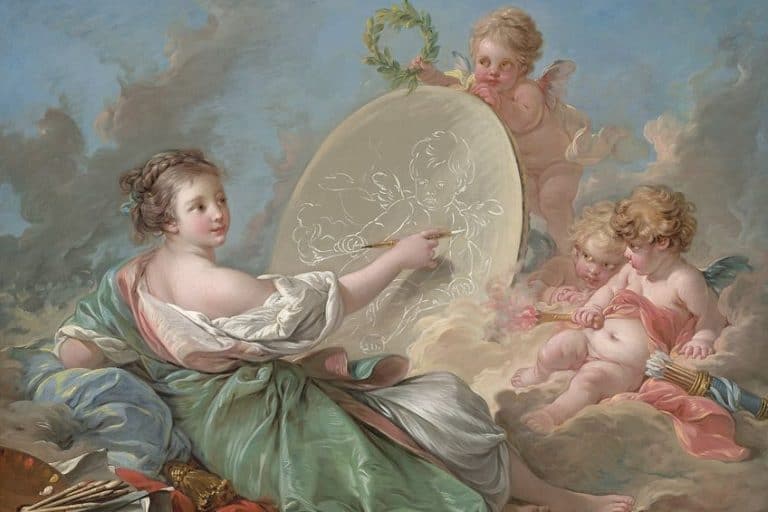
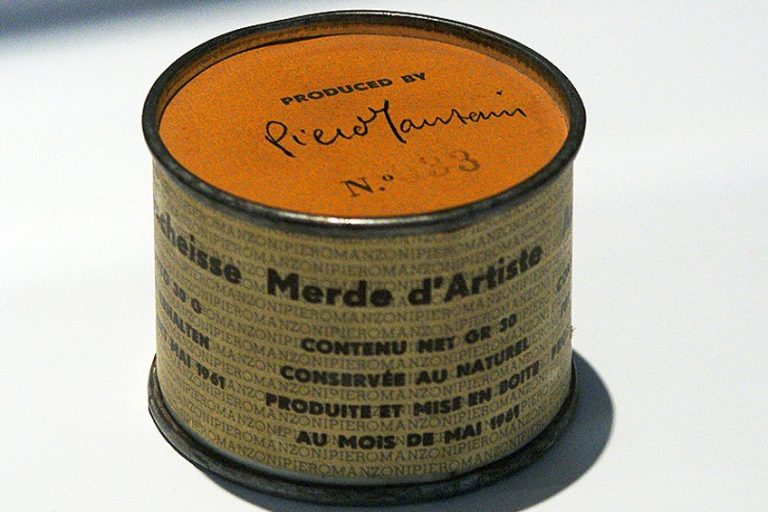


very helpful websites for images “Exploring the rich tapestry of Indian art and culture is a journey through history, tradition, and innovation. From the timeless elegance of classical dance forms to the bold expressions of modern Indian art, the cultural heritage of India is as diverse as it is profound.